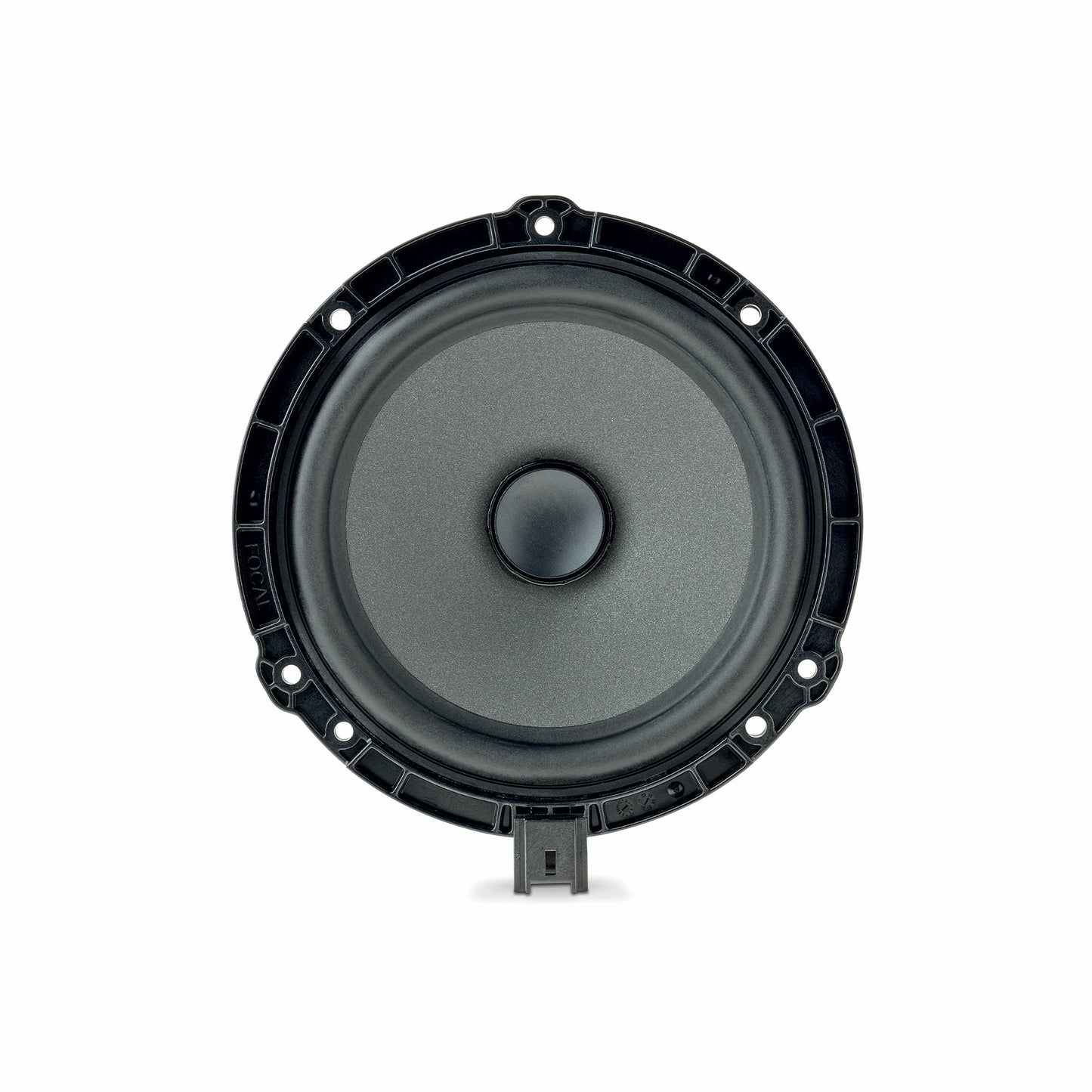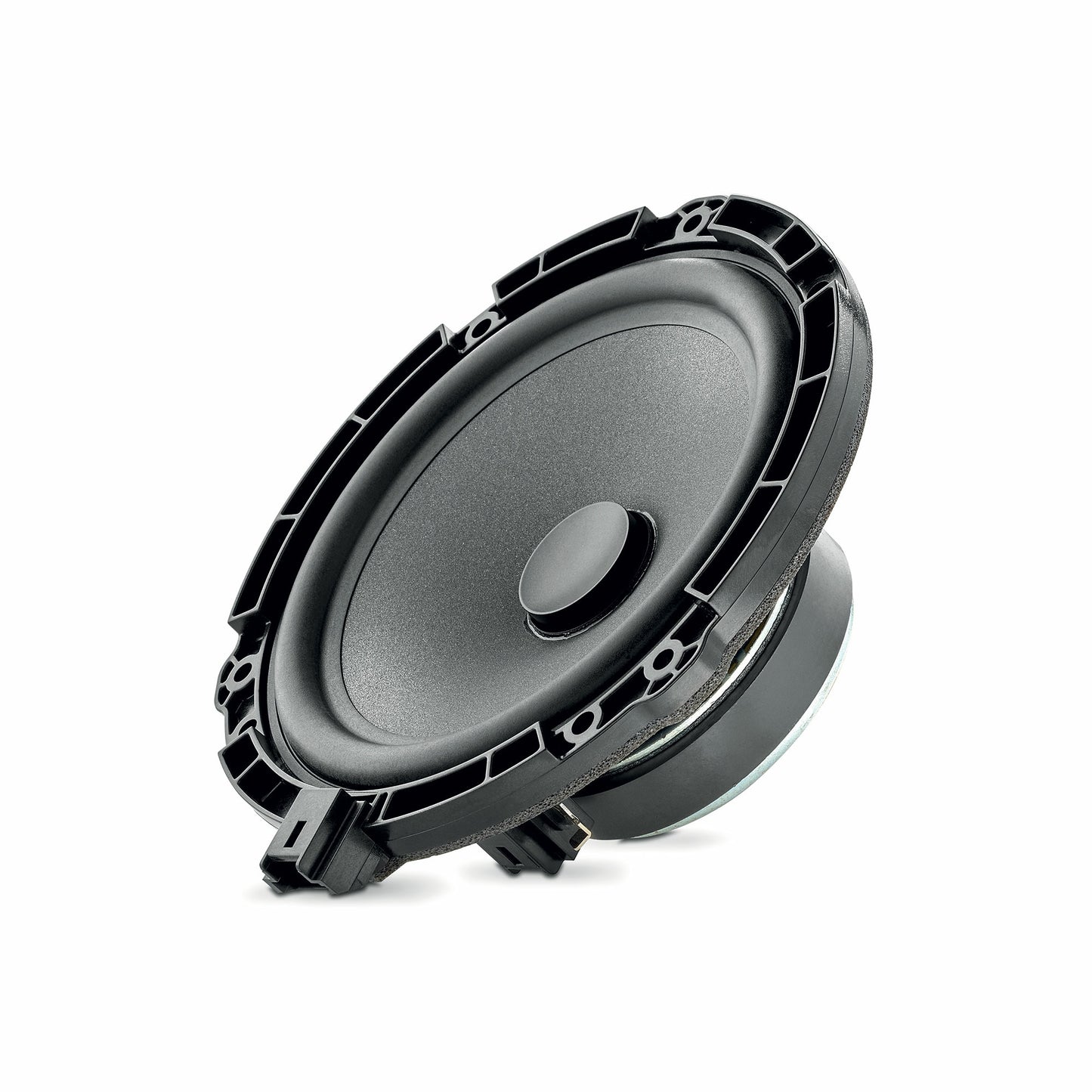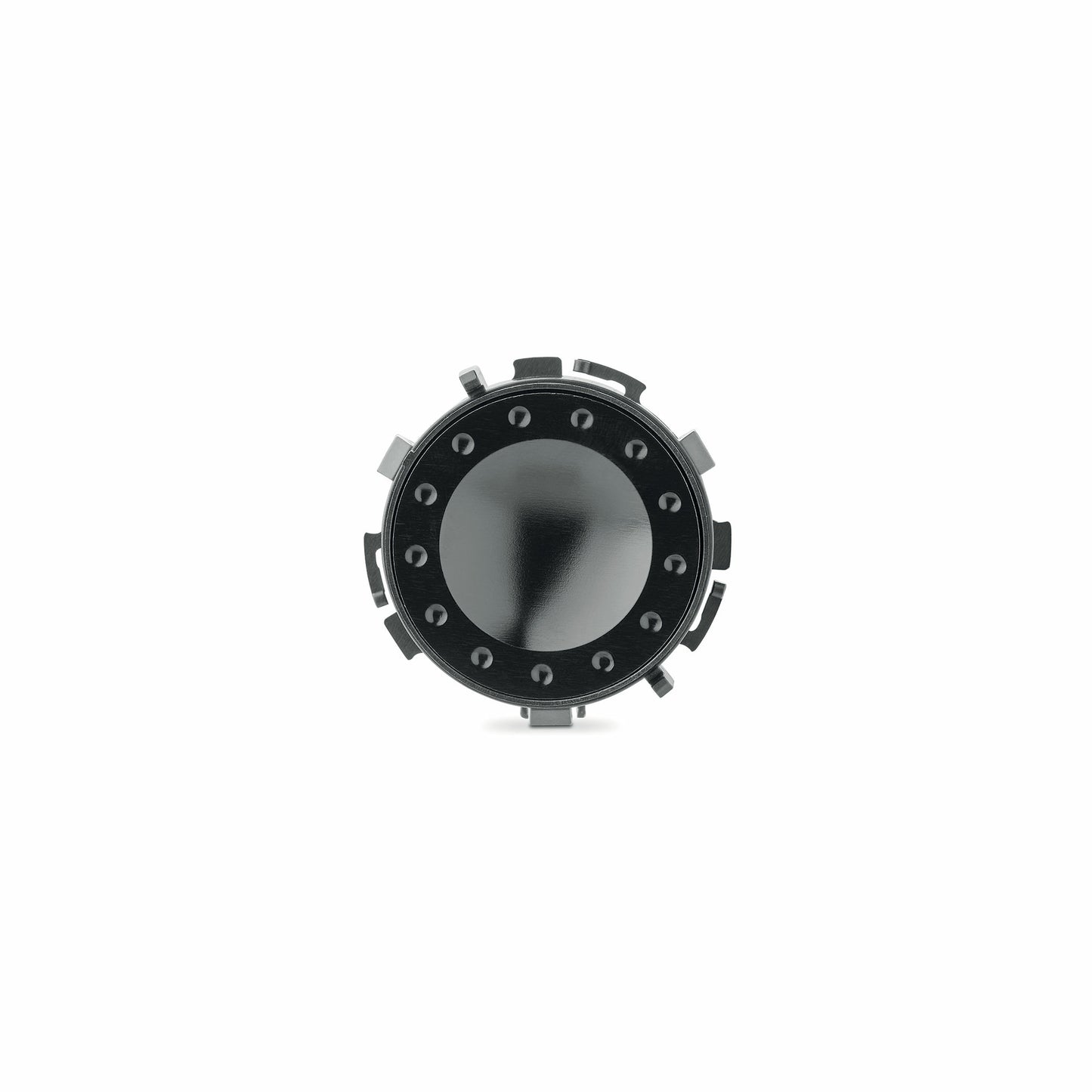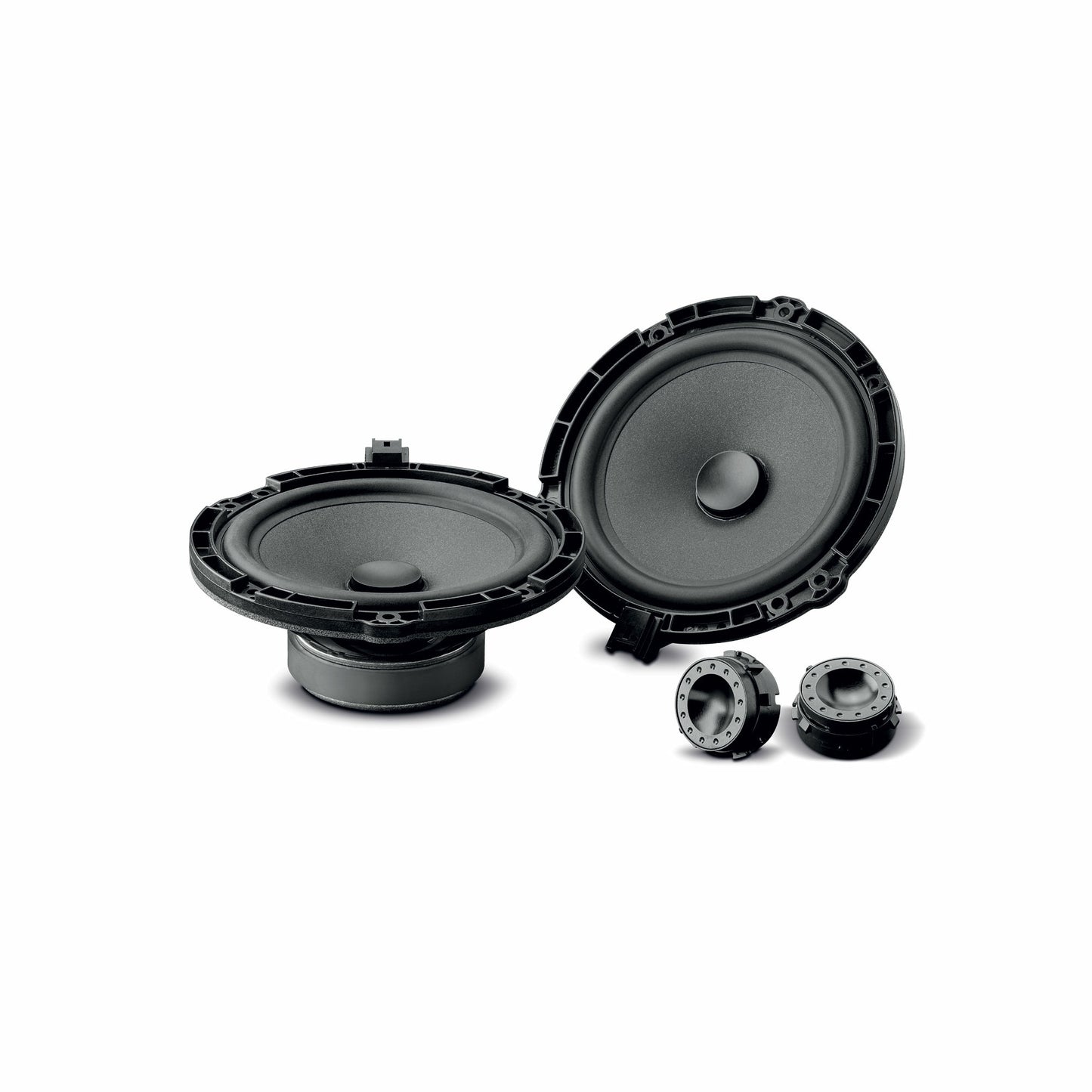Focal
IS PSA 165
IS PSA 165
2 separate way kit
Couldn't load pickup availability
IS PSA 165 is a kit designed for all drivers who want to install a hi-fi quality sound solution in their car. The speakers feature Polyglass technology, for natural sound without coloration. The TNB inverted-dome tweeter offers plenty of detail, without directivity.
KEY POINTS
- High sensitivity
- Low mounting depth (49.9 mm)
- Ideal replacement for original loudspeakers
- Dynamic and neutral
- Soundstage orientation
Find out more about compatible kits, installations, models and systems
SPECIFICATIONS
Sound - Acoustics
- Product type : 2 -way separate kit
- Membrane : Polyglass
- Tweeter : 165 мм
- Filter : Integrated
- Frequency response (+/- 3dB) : 6OHz - 20kHz
- Maximum power : 120 watts
- Motor : Neodymium
- Nominal Impedance : 4 Ω
- Nominal power : 60 W RMS
- Sensivity : 92.6 dB
- Suspension material : Butyl
Sound - Electronics
- RMS power : 70 W RMS
TECHNOLOGIES
TWEETER IN AL/MG

Treble finesse
Membrane shape and materials are essential. For the finest treble, our engineers have patented the inverted dome tweeter, a Focal signature. The inverted dome shape offers the advantage of low directionality and a small-diameter, lightweight coil for better acceleration. As for the materials used, they combine the key points of a good loudspeaker: aluminum increases dome rigidity and reduces distortion, while the addition of magnesium provides excellent damping. The surround that connects the dome to its support uses Poron, a shape-memory material. This surround is derived from the famous Utopia Beryllium tweeter, and reduces distortion by a factor of three between 2000 Hz and 3000 Hz, where the ear is most sensitive.
POLYGLASS MEMBRANE
 Well-defined mids
Well-defined mids
The diaphragm, the key component of a loudspeaker, is at the heart of our acoustic engineers' research. Polyglass technology, exclusive to Focal, consists of applying fine glass microbeads to a cellulose pulp cone. This process reconciles the excellent damping of paper with the rigidity of glass. The stiffness index is almost 10 times that of polypropylene. Adjusting the mass-rigidity-damping ratio results in a remarkably linear frequency response curve, right from the membrane design stage. This innovation also significantly increases definition in the midrange register.
Share












